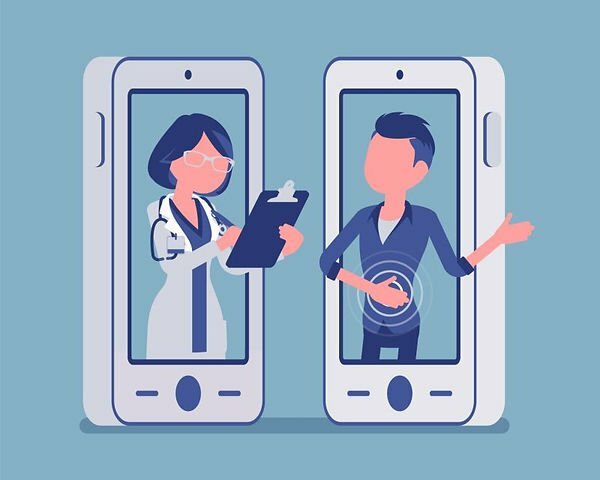Management of emergencies is an integral part of healthcare, and the quality there has a key role in determining patient health. However, while today’s trauma care systems offer significantly more medical capability than some years ago, they still suffer from severe fragmentation, an absence of systemwide coordination, and limited accountability.
According to the World Health Organization, developing apps for the health domain is directly or indirectly intended to maintain or improve healthy behaviors, quality of life, and people’s well-being.
We found that all apps in the Google Play Store were free, and 73 apps in the Apple App Store were paid, ranging from US $0.89 to the US $5.99. Moreover, 39% of the included studies were related to warning systems for emergency services, and 21% were associated with disaster management apps.
On the one hand, mobile apps help people in their health and wellness management. On the other hand, numerous mobile apps aim to assist healthcare providers in improving and facilitating patient care. According to a recent 2019 report on global mHealth, the market can be segmented based on the following:
- Equipment/connected medical devices
- mHealth services
- mHealth apps.
Why does the world need it now more than ever?
The last two years have made the world realize that the global healthcare systems lack the necessary technology for emergent care. However, certain drawbacks are inherent to the current infrastructure. Let us discuss and see if this can be resolved using a new-age mobile application dedicated to ambulances.
Some of the available ambulances are booked for non-emergency cases, such as transferring a patient from one health care center to another or simply taking back a discharged patient home.
Emergency care includes all immediate and unscheduled maintenance with varying degrees of understanding:
- Life-threatening situations.
- Urgent care.
- Crisis/disaster management.
Business intelligence software is being used to provide a real-time overview of resources at hand and track accurate caller location. Triage centers in Copenhagen, as an example, are using Corti, artificial intelligence (AI) designed to detect cardiac arrests. Corti can help dispatchers reach 92% accuracy when witnessing out-of-hospital cardiac arrests and see cardiac arrest an average of 30 seconds faster than human operators.
Building an emergent healthcare app – step by step

1. Regulating the data protection
Encrypting your patient’s data is one of the most overlooked yet crucial steps to take while building your app. The privacy standards may vary according to the regions of the world. For instance, in the United States, you need to have an app compliant with the Health Insurance Portability and Accountability Act (HIPPA).
In Canada, you need to comply with your app by the Personal information protection and electronic documents Act (PIPEDA). However, in Asian countries, healthcare apps need to comply with the Personal Protection Act or personal Data Protection Act. In Europe, healthcare app developers need to follow the General Data Protection Regulation (GDPR) while building medical applications.
2. Choose the most relatable and user-friendly design
The next step is to ensure a high user-friendly design since we are dealing with unprecedented events.
- While creating user stories (pathways), make them as consistent and rational as possible.
- Carefully choose user interactions to achieve their goal on the app; make the interactions’ number minimal.
- Keep the app’s graphic design clean and easy to understand.
- Focus on the user’s convenience, time-saving, and the overall seamless in-app experience.
3. App Features
A survey of 300,000 healthcare apps suggests that only about 11% of these apps satisfy their user’s needs. And the most common mistakes here are related to the interfaces and lack of vital app features.
Some popular app features that you could include in your app are:
- Medical Records
- Checking Laboratory Test Results
- Medical test reports and scans
- Check with your doctor virtually, and get to know his schedule.
- Doctor’s profiles for looking into their credibility
- Make in-app emergency aid
- Prescriptions and reminders to take these medications
- Pop-ups for inside-hospital navigation
- Health indicators and tracking – Like cholesterol, oxygen, pulse, weight, etc.
4. Your mobile app development team

This is probably the most important step you need to take. While hiring healthcare mobile app development experts, you need to ensure that they align with your business values, understand and solve the business challenge, and are an extended partner for your company.
5. Testing and Launch of the healthcare app
- Avoid compliance with privacy regulations: The first step is to identify the legal aspects of data security in various regions.
- Poor user experience: Always consult the right set of designers and developers to provide you with an engaging user experience overall.
- Lack of development quality: Only experienced specialists can develop a mobile healthcare app that satisfies users’ needs and brings value to your business.
In all, if you’re planning to develop a healthcare app for patients, we can offer you a free consultation session to discuss further. In addition, we build smoothly-working and efficiently problem-targeting custom solutions for healthcare providers.



